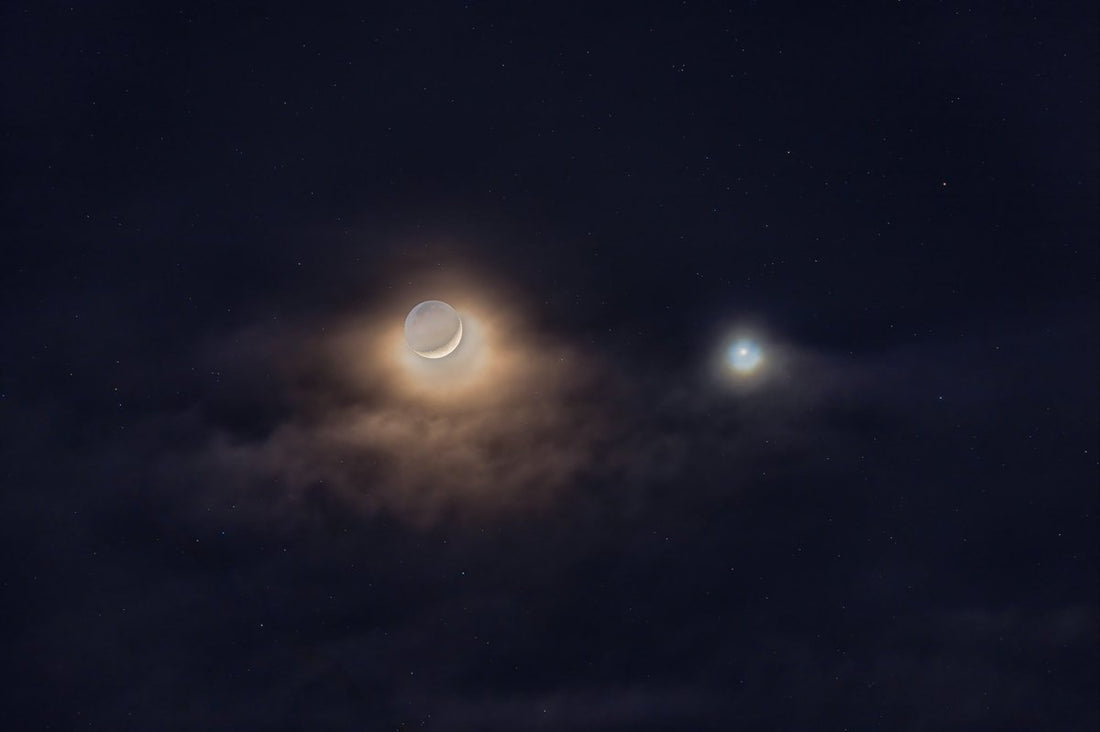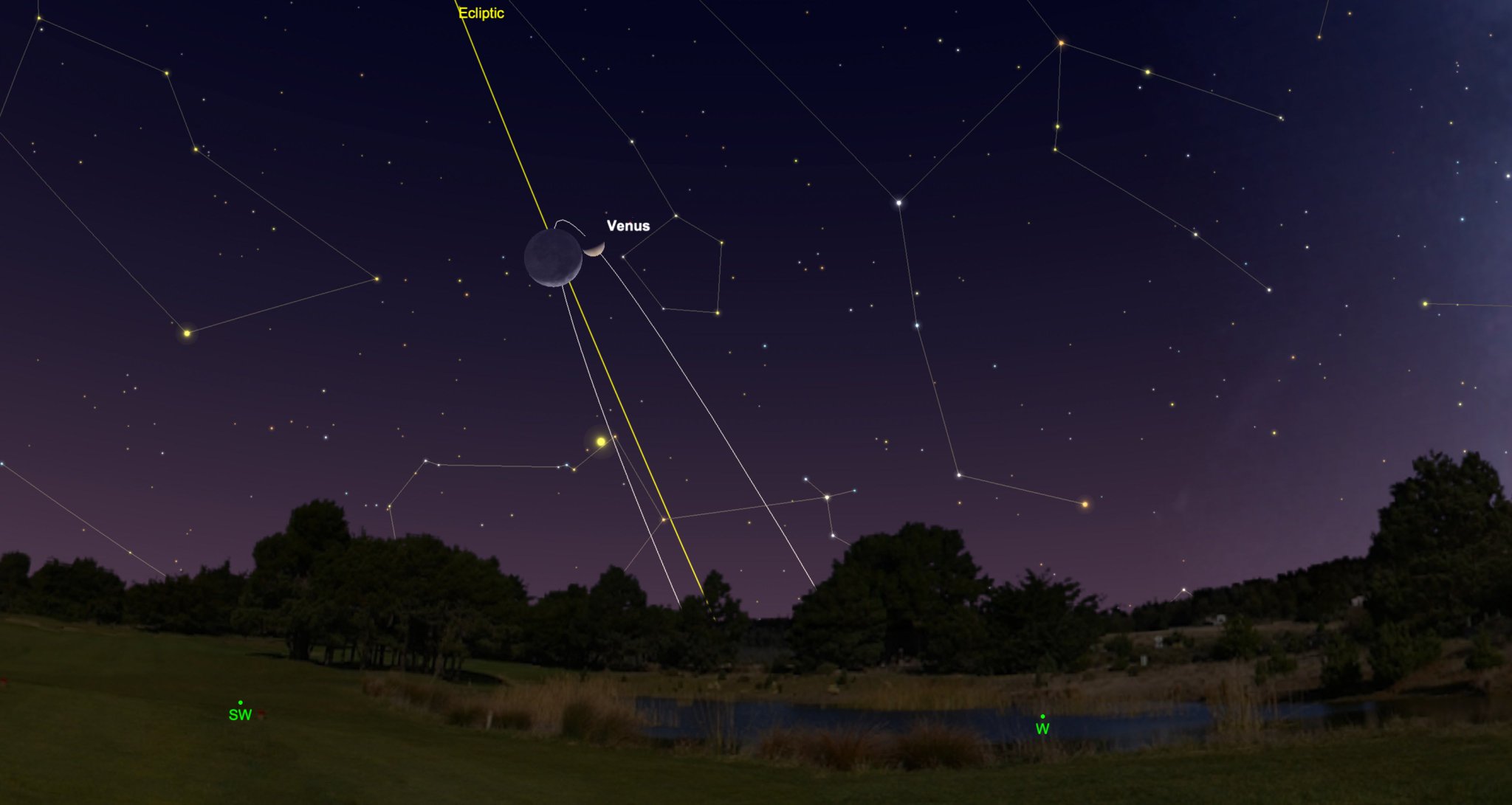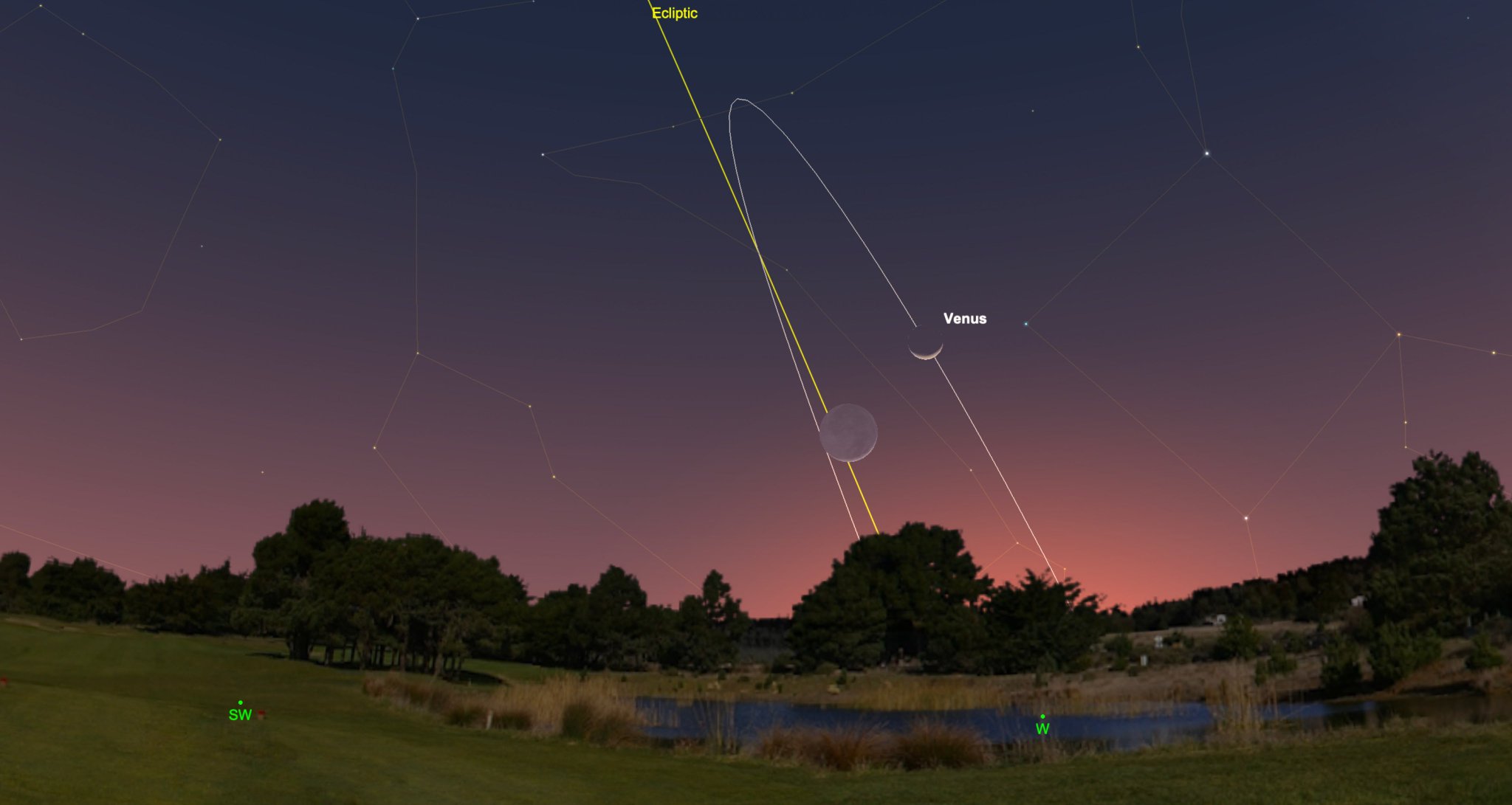
Venus Goddess of Love at Her Best Valentine's Day
Share
If you had clear skies you could not have missed the close conjunction of the crescent Moon near Venus on February 1 (when I shot the opening image). That conjunction marked the start of a fine month of Venus watching.
However, Venus has been prominent in our evening sky for the last few months. The steep angle of the ecliptic – the line along which we find the planets – has swung Venus up unusually high into the dusk sky this winter, at least for observers in the northern hemisphere. As a result, Venus has been setting late enough to shine in a dark sky, making it especially obvious to even the most casual sky gazer.
If you’ve aimed a telescope at Venus you’ve seen it as a white disk, with a phase like a waxing Moon. Over the next few weeks, Venus will approach closer to the Sun, placing it a little lower in the west each night, signaling the end of its evening appearance — but not before it puts on a peak performance. As Venus begins its descent toward the Sun, it will brighten even more! Its disk will also grow in size as Venus gets closer to Earth, but its phase will shrink from a wide crescent to a razor thin crescent.

In this illustration for February 1, 2025 I have used SkySafari to magnify the disk of Venus by 150x and the Moon by 6x. The scene is for a mid-northern latitude. On February 1 the waxing Moon sat just 2° below Venus for a striking pairing in the evening sky. Look at Venus through a telescope and you’ll now see it is also a crescent, but wider than the Moon’s phase that night. At the start of February the Venusian disk is 32 arc seconds across and is 37% lit.
On February 14 (Valentine's Day, appropriate for the planet named for the goddess of love) Venus peaks at maximum brilliance, at magnitude -4.9, far brighter than any other planet can ever shine — or star for that matter, unless it’s a supernova! The Venusian disk has now grown to 39 arc seconds across, but its phase has thinned to 27% lit. Even though less of the disk is sunlit, the portion that is lit is now larger. The two factors — growing size but decreasing phase — combine to peak Venus at its maximum brightness (or “greatest illuminated extent,” to use the formal term) in mid-February.
By March 1, as shown above, the waxing crescent Moon is back near Venus for a wider conjunction. But the disk of Venus has now grown to 49 arc seconds across, larger than any other planet can appear, and is now just 14% lit. That’s thin, though the Moon this night is an even thinner 5% phase.
The evening show ends in early March when Venus, which has been so obvious for the last few months, drops rapidly out of sight toward the Sun, to disappear from view as the planet comes between Earth and Sun (called “inferior conjunction) on March 22. To watch SkySafari simulate the motion and phases of Venus, (open this story in "Tonight" -> "Featured Story" of any SkySafari 7 app) and click the link to set the sky for February 1, 2025.
Then step ahead in time at one-day increments to watch Venus descend toward the Sun, grow in size, but shrink in phase, with its disk magnified by 150 times. Or better yet, get outside every clear evening with a telescope to watch as Venus performs at its best and most brilliant.




1 comment
wonderful pictures!!!